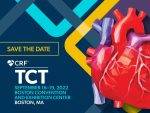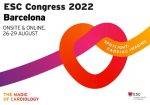At present TAVR is a valid alternative to treat different risk groups of patients with severe aortic stenosis. Among the different valves, there are two types, the self-expanding (SEV) and the balloon expandable (BEV) valves, that are the most implanted and the most researched by randomized studies across different risk groups. There are different generations...
Mitral Trial: 2-Year Followup
At present, an important group of patients with mitral valve disease are at high surgical risk, especially those with deteriorated bio-prosthesis, severe mitral annulus calcification or those who had received mitral annuloplasty. Percutaneous treatment with balloon expandable valves is a valid option to treat these patients, seeing as their 30 day and one-year outcomes look...
Safety of Atherectomy in Femoropopliteal Disease
Peripheral artery disease hinders patient quality of life extensively. In advanced stages, such as critical lower limbs ischemia (CLLI), it could yield an increased risk in major cardiovascular events, as well as limb-related events (amputation or repeat revascularization), making treatment with revascularization paramount in these cases. Calcification is a predictor of revascularization failure, which is...
Edge-to-Edge Repair Reduces Hospitalization and Mortality Rates in Secondary Mitral Valve Regurgitation?
Severe secondary mitral valve regurgitation is associated to hospitalization and mortality. The COAPT study has shown the superiority of guideline directed medical therapy at maximal tolerated doses according to guidelines (GDMT) plus edge-to-edge transcatheter repair (TEER) versus GMDT alone. However, at present there is no information on the impact of hospitalizations and their relationship to...
BEST-CLI: Revascularization of Critical Lower Limb Ischemia, a Pragmatic Study
Critical lower limb ischemia (CLLI) is associated with a major deterioration in quality of life and a significant increase in morbidity and mortality. Its estimated annual incidence is 220 to 3500 cases per million people, with an expected prevalence of 11% of patients with peripheral arterial disease. CLLI is the “terminal” stage of peripheral artery...
SURTAVI at 5 Years
Transcatheter aortic valve replacement (TAVR) by transfemoral access has shown great benefit for different risk groups, but its long-term durability is still uncertain. Available evidence comes from small analysis and a single randomized trial with 280 patients and an 8 year follow-up: the NOTION Trial, where TAVR showed less valvular degeneration than aortic valve replacement (AVR) surgery....
TCT 2022 | CLASP II D TRIAL: Transcatheter Edge-to-Edge Repair for Mitral Regurgitation in Patients at Prohibitive Risk
The CLASP IID study was a prospective randomized study to assess the efficacy and effectiveness of the PASCAL transcatheter valve repair system compared with the MitraClip device for patients with degenerative mitral regurgitation (MR) at prohibitive surgical risk. The study included Patients at prohibitive surgical risk, candidates for both devices, with MR 3+ to 4+,...
RIPCORD 2 Study: Routine Assessment Using Pressure Wires in Acute Coronary Syndrome
The inclusion of fractional flow reserve (FFR) has changed how coronary interventions are treated. Current guidelines endorse its use in intermediate lesions with no evidence of ischemia in non-invasive studies in patients with multivessel disease. The original RIPCORD (Routine Pressure Wire Assessment Influence Management Strategy at Coronary Angiography for Diagnosis of Chest Pain) study proposed...
Is TCA Useful for Severe Impairment of Left Ventricular Ejection Fraction?
Heart disease is the most frequent cause of heart failure and, in some observational studies, transluminal coronary angioplasty (TCA) could help improve ventricular function. The only major randomized study to compare myocardial revascularization surgery (MRS) vs. medical treatment in patients with ventricular function impairment was the STICH study, which showed no difference at 5 years,...
ESC 2022 | REVIVED-BCIS2
The REVIVED-BCI2 included 700 patients with ejection fraction ≤35% with extended coronary artery disease and plausible PCI. Patients were randomized to PCI plus optimal and complete medical treatment (OMT) according to the current guidelines. 347 patients received PCI and 353 OMT. Primary end point was all cause death and hospitalization for cardiac failure. There were...









